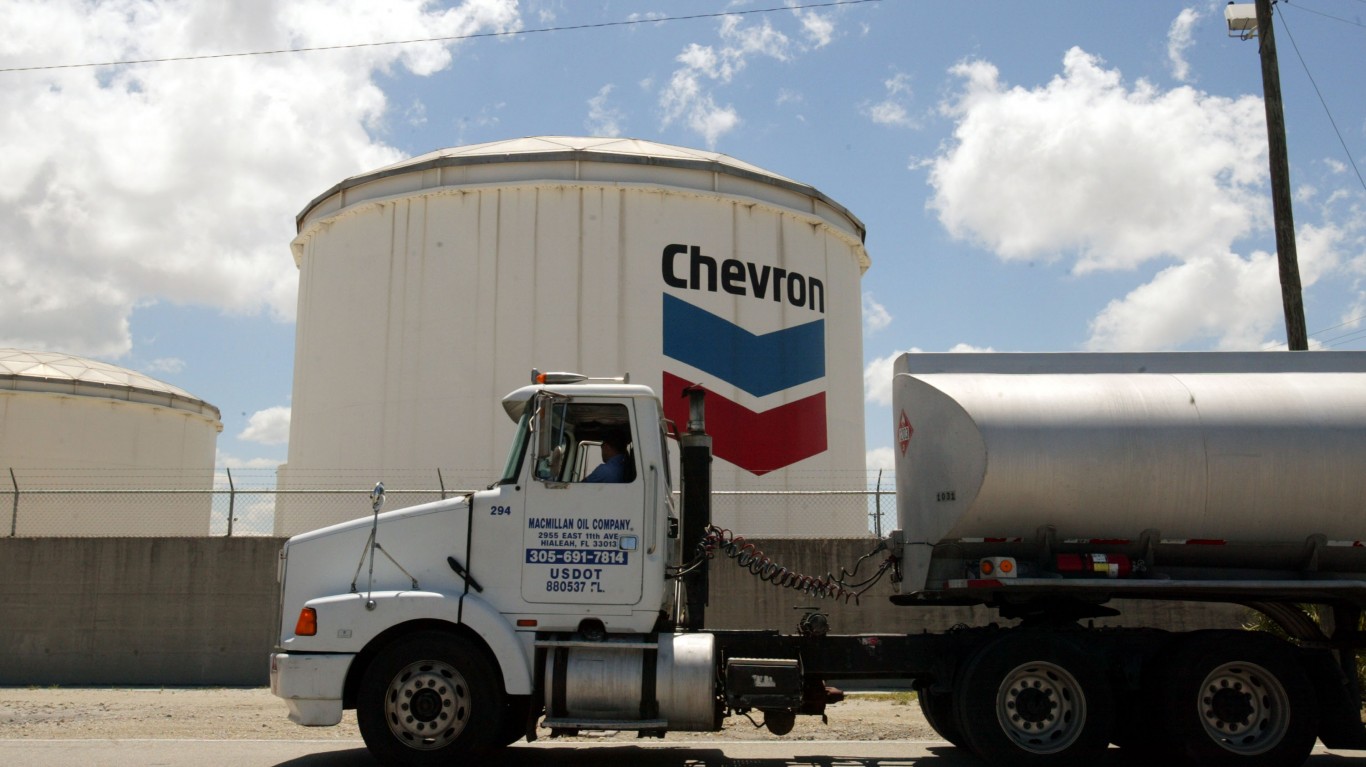Energy
With Chevron and Exxon Earnings on Deck, Dividend Sustainability Up for Debate

Published:

With peak earnings season here, nearly half of the 30 Dow Jones industrials were reporting results in the week of January 31. Technology has ruled the roost of the nation’s largest companies, turning in mostly positive earnings reports. Just don’t tell that to the flailing energy sector, as oil and gas stocks have performed horribly.
Friday will bring key energy earnings reports from Chevron Corp. (NYSE: CVX) and Exxon Mobil Corp. (NYSE: XOM) before the opening bell. These reports may create positive or negative waves throughout the sector. Note that crude oil prices have fallen for most of January, and the $52 and $51 per barrel of West Texas Intermediate support levels are now in very close focus.
Chevron’s consensus estimates from Refinitiv call for $1.43 in earnings per share and $39.25 billion in revenue. Its shares closed at $111.85 last week and most recently traded near $109.50, after hitting a 52-week low Thursday morning. The new 52-week range is $109.06 to $127.34. The consensus analyst target was $136.29 last week and was last seen at $135.83.
Chevron frequently has been deemed a more cautious player than rival Exxon when it comes to capital spending and reserves. Of course, that is up for debate, but Chevron’s lower 4.3% dividend implies that the market is not demanding quite as much from Chevron.
The consensus estimates for Exxon are earning of $0.47 per share on revenue of $65.18 billion. Shares ended last week at $66.32, but the stock was under $64 on Thursday, with a new 52-week range of $63.43 to $83.49. Exxon’s dividend yield is nearly 5.4%, now that its shares are so low.
Last year was just a continuation of the brutality against the energy majors, and many smaller oil and gas players have curtailed operations in hopes of avoiding the market’s disappearing act under bankruptcy or reorganization. Exxon has not seen such low share prices since 2010, while Chevron is within a few percentage points of a two-year low.
Chevron and Exxon are closer in market cap levels than in the past due to Exxon’s poor performance. Chevron has a $207 billion market cap, versus $270 billion for Exxon.
Where things become extra tricky is how these oil giants will (or will not) be able to meet their dividend expectations going forward. In fact, this is likely to become a key debate among investors who are still willing to invest in oil and gas. Exxon’s earnings estimates are $2.42 per share in 2019 and $3.54 for 2020, while the annualized dividend is $4.38 per share. Chevron has a $4.76 per share annualized dividend, and its earnings estimates are $6.27 per share in 2019 and $6.81 in 2020. Most investors do not take much comfort when the common stock dividends they have counted on for years are suddenly lowered or are at risk of being so.
Before simply endorsing oil and gas earnings estimates, note that many parts must be considered. As earning face pressure, asset sales and other dispositions can help support a dividend. That just cannot last indefinitely, however.
Many forecasts for the price of oil heading into 2020 were better than they have fared in January. The Saudi Aramco initial public offering in 2019 was large enough, despite a very small free-float of shares, that the foreign giant is effectively more than four times larger than Exxon and Chevron combined.
The most recent short interest reporting showed that short sellers are sticking with their negative bets against oil and gas majors. That is even as the shares have continued to fall. Exxon and Chevron were both huge disappointments compared with the Dow and S&P 500 in 2019. Both stocks showed total returns year to date of −8% or so coming into Thursday.
Also at issue is that the investing community is shunning oil and other fossil fuels at an ever greater rate each year. The rise of ESG (environmental, social and governance) is leaving oil and gas in the shadows. Many top firms are even offering alternatives that allow traditional investing models to entirely (or almost entirely) screen out anything tied to fossil fuels. And some pensions and endowments have entirely boycotted companies tied to oil and gas in their investment portfolios.
Many value investors have touted the great underperformance of the oil and gas leaders for quite some time. While the valuations may be cheap, what happens if an ever larger portion of all equity investors refuse to invest in oil and gas stocks at any price? If social directives prevail over historical patterns, where ultimately a sector becomes so cheap it has to be owned, then it would mean that many investors will refuse to own the stocks at five times earnings just as vehemently as they would at eight or 10 times.
Another curveball that should work in favor of oil and gas giants, but isn’t yet, is that there are still many drivers (aside from Tesla owners) who just don’t want to drive electric vehicles.
Merrill Lynch has tried to remain positive on a few oil and gas leaders, and it seems hard to imagine how it will stick with a $100 price objective for Exxon in almost any circumstance at this point. Its price objective on Chevron is a more modest $125.
Exxon Mobil stock was down 0.5% at $63.80 in midday trading on Thursday, and Chevron stock was down 0.3% at $110.00.
Thank you for reading! Have some feedback for us?
Contact the 24/7 Wall St. editorial team.